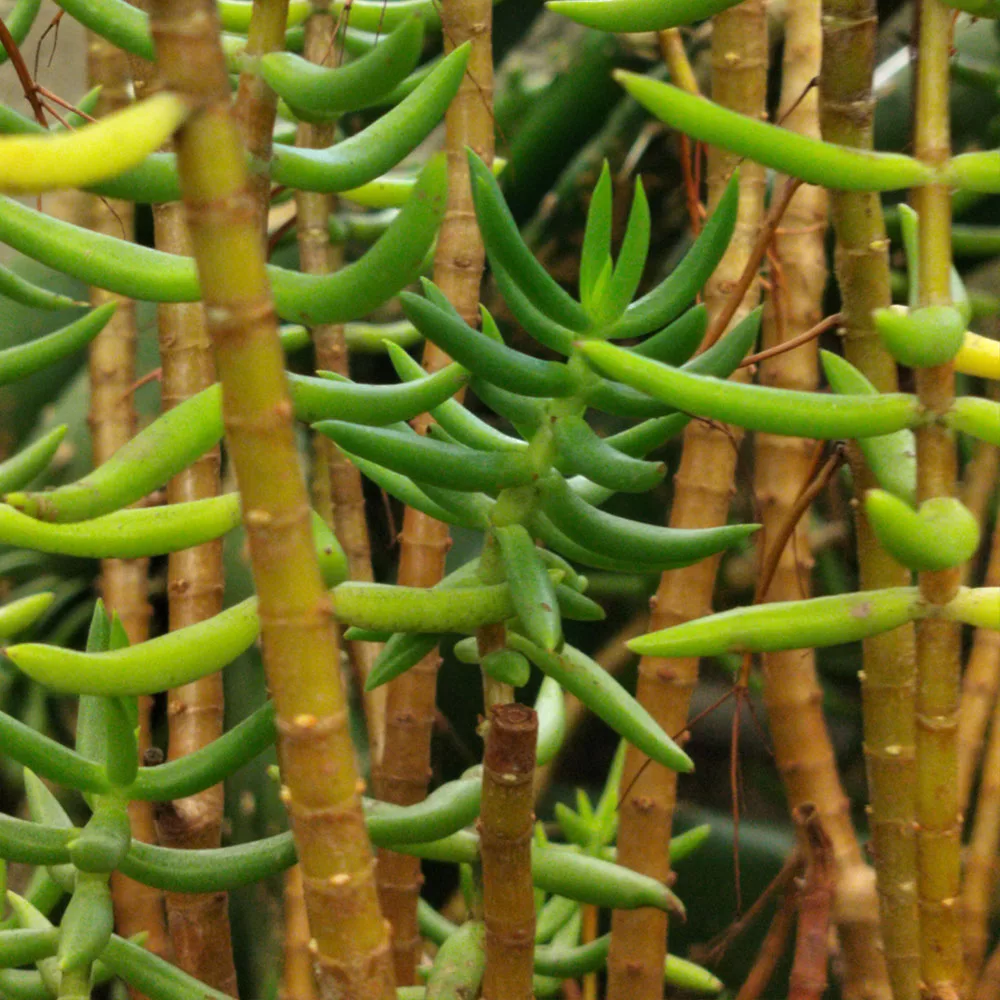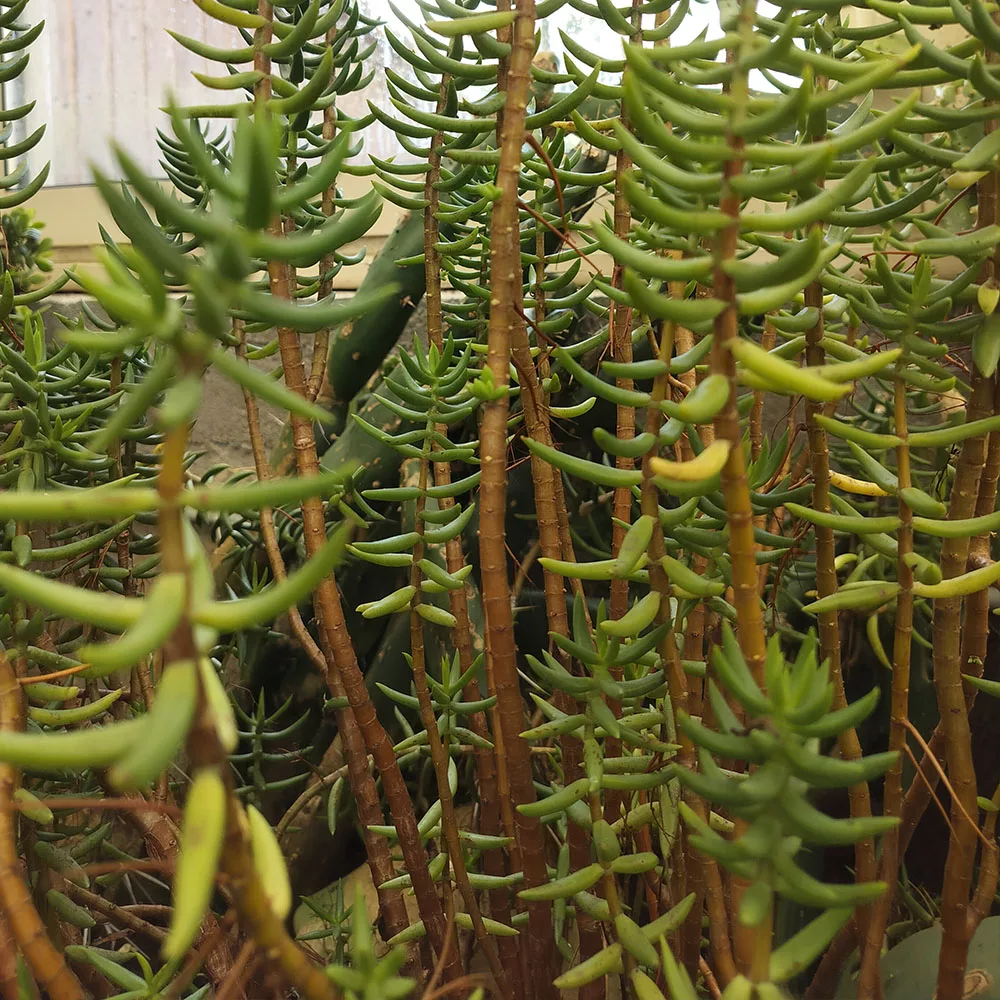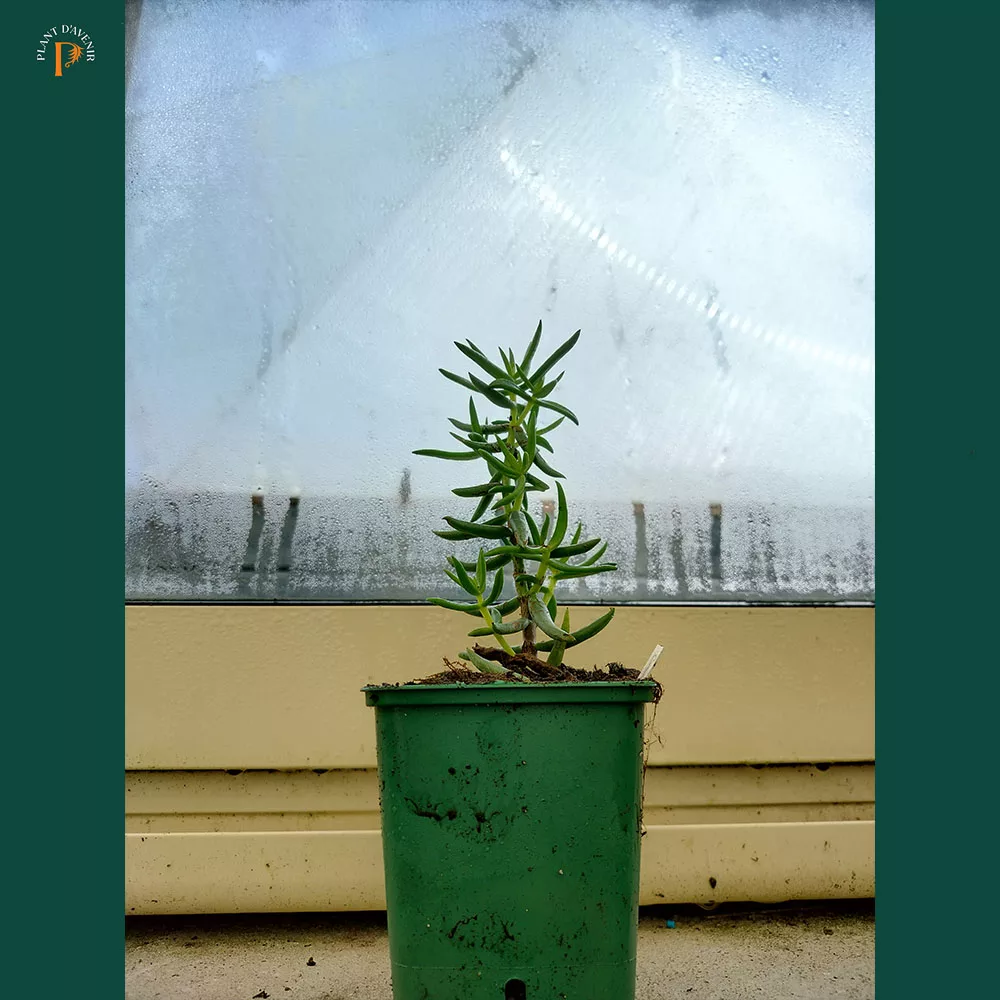-
 4,08 € × 1×€4.08333333
4,08 € × 1×€4.08333333
Customer matched zone "Locations not covered by your other zones"
“Crassula tetragona” has been added to your cart. View cart
Crassula tetragona
A succulent with dark green, sword-shaped leaves.
Rated 0 out of 5
0 customer reviews
4,08 €
Only 20 item(s) left in stock!
Tags: evergreen, graphique, perennial, persistant, plant, secheresse, soleil
SKU: pda335
Category: Better Indoors, Evergreen, Make it Pop, The Stunners
Estimated Delivery :
2-3

Crassula tetragona
4,08 €
Only 20 item(s) left in stock!
Crassula tetragona is a drought tolerant, evergreen succulent plant with a compact upright habit, dark green, sword-shaped leaves.
It is valued for its upright, columnar growth habit, fine needle-like leaves, and compact, evergreen structure, making it an excellent choice for rock gardens, bonsai, and container cultivation.
It is most commonly called the miniature pine tree among plant enthusiasts, and is often used in the creation of pine-like bonsai.
The Crassula are known as pygmyweeds – they are a large group of succulents containing over 200 species.
Cut them back if they get too long or too leggy – they respond well to a trim!
It looks really nice with other succulents like a red Sedum or Graptopetalum for layered succulent displays.
Learn how to care for your Crassula tetragona:
The Tale & The Botany: Crassula tetragona
“Crassula” means thick or fat in Latin, referring to the leaves that become plumpy the more water they are able to store.
This is a good indicator of the health of your crassula – if less plumpy, then she needs a dash of water!
This genus was first named in 1862 and the genus contains 150-200 species, most of them occurring in South Africa.
The species name ‘tetragona’ means ‘with four sides’ and describes the arrangement of the leaves.
🌸 Floral Morphology: Crassula tetragona
Crassula tetragona produces small, star-shaped white to pale pink flowers, often grouped in terminal clusters along the tips of the stems.
The flowers are delicate but numerous, appearing in late spring to summer, and attract bees and other pollinators.
The leaves are tiny, narrow, and triangular, arranged oppositely along the stems, giving the plant a pine-like or coniferous appearance.
🌱 Reproductive Biology
This species reproduces both sexually via seeds and vegetatively via stem cuttings. The hermaphroditic flowers can be pollinated by insects, but propagation is commonly done vegetatively because cuttings root easily and grow quickly, preserving the plant’s upright form.
Over time, Crassula tetragona can form dense, shrub-like structures that maintain their architectural interest.
🌍 Ecology & Adaptations
Native to arid and semi-arid South African regions, Crassula tetragona is adapted to dry, sunny environments:
-
Succulent leaves store water to survive periods of drought.
-
The upright columnar stems reduce leaf overlap and maximize sunlight capture.
-
Prefers well-drained sandy or rocky soils to prevent root rot.
-
Tolerates full sun and mild frost, but prolonged cold or excessive humidity can damage foliage.
Other names:
Miniature Pine
Square-Stemmed Crassula
Origin:
South Africa
| Weight | 0,5 kg |
|---|---|
| Soil | Sandy, Well-Draining |
| Exposure | Full Sun |
| Frost Tolerance | -1°C to -5°C |
| Size | 1m H x 0.6m W |
Reviews
0
Rated 0 out of 5
0 customer reviews
5
0
4
0
3
0
2
0
1
0
Only logged in customers who have purchased this product may leave a review.
Related Products
Euphorbia cyparissias Clarice Howard
A Euphorbia that resembles a soft little cyprus tree
A Euphorbia that resembles a soft little cyprus tree
Rated 0 out of 5
Leonotis leonurus
Known for its magnificent orange flowers and fragrant leaves
Known for its magnificent orange flowers and fragrant leaves
Rated 0 out of 5
Tradescantia sillamontana Variegata
A fuzzy, bright yellow, drought-resistant, indoor plant
A fuzzy, bright yellow, drought-resistant, indoor plant
Rated 0 out of 5
Mertensia maritima
A deciduous perennial with fleshy, blue-grey-green leaves that naturally thrives on the wind and sea swept coasts
A deciduous perennial with fleshy, blue-grey-green leaves that naturally thrives on the wind and sea swept coasts
Rated 0 out of 5
Achillea ptarmica Boule de Neige
White pompom flowers to attract bees to your garden all summer long.
White pompom flowers to attract bees to your garden all summer long.
Rated 0 out of 5
Solidago ‘Golden Shower’
Beautiful showers of yellow flowers
Beautiful showers of yellow flowers
Rated 0 out of 5
Nigella damascena
Delicate blue flowers surrounded by a green mist of lacy feathers for most of the summer.
Delicate blue flowers surrounded by a green mist of lacy feathers for most of the summer.
Rated 0 out of 5
Persicaria Donald Lowndes
A low spreading, ground cover plant with short pink pokers of small flowers all summer long.
A low spreading, ground cover plant with short pink pokers of small flowers all summer long.
Rated 0 out of 5
Echinacea purpurea
A perennial with purple flowers all summer long
A perennial with purple flowers all summer long
Rated 0 out of 5
Mentha x gracilis ‘Variegata’
A striking mint with striped and flecked golden-yellow leaves that are gingery-minty.
A striking mint with striped and flecked golden-yellow leaves that are gingery-minty.
Rated 0 out of 5
Tradescantia Blushing Bride
Gorgeous blushes of pink and white that appear in the coldest nights.
Gorgeous blushes of pink and white that appear in the coldest nights.
Rated 0 out of 5
Euphorbia myrsinites
Known for its draping form of silver-gray foliage and radiant blooms.
Known for its draping form of silver-gray foliage and radiant blooms.
Rated 0 out of 5
Echinops ritro
Tall, electric blue globe thistles
Tall, electric blue globe thistles
Rated 0 out of 5
Veronica spicata
A flowering plant in the family Plantaginaceae that produces graphically striking, blue candle-like flowers.
A flowering plant in the family Plantaginaceae that produces graphically striking, blue candle-like flowers.
Rated 0 out of 5
Mentha suaveolens ‘Calixte’
A yellow-green dappled variation of the fuzzy mint.
A yellow-green dappled variation of the fuzzy mint.
Rated 0 out of 5
Aptenia cordifolia Variegata
A succulent plant in the iceplant family with bright carmine flowers.
A succulent plant in the iceplant family with bright carmine flowers.
Rated 0 out of 5
Billbergia nutans
A bromeliad featuring a three colored, striped flower
A bromeliad featuring a three colored, striped flower
Rated 0 out of 5
Crassula perforata
A slow-growing succulent with graphic rambling stems
A slow-growing succulent with graphic rambling stems
Rated 0 out of 5
recent view product
Brachyglottis greyi
Soft grey velvety velvety bush covered in bright yellow daisy flowers
Soft grey velvety velvety bush covered in bright yellow daisy flowers
Rated 0 out of 5
Achillea Little Moonshine
A compact yarrow, known for its bright yellow flowers
A compact yarrow, known for its bright yellow flowers
Rated 0 out of 5
Nepeta cataria
Known for its grey-green, aromatic foliage and masses of lavender blue flowers.
Known for its grey-green, aromatic foliage and masses of lavender blue flowers.
Rated 0 out of 5
Kalanchoe laetivirens – Aranto
A cultivar with larger all-green leaves and thousands of pups along their broad edges.
A cultivar with larger all-green leaves and thousands of pups along their broad edges.
Rated 0 out of 5
Achillea ptarmica Boule de Neige
White pompom flowers to attract bees to your garden all summer long.
White pompom flowers to attract bees to your garden all summer long.
Rated 0 out of 5
















































There are no reviews yet.